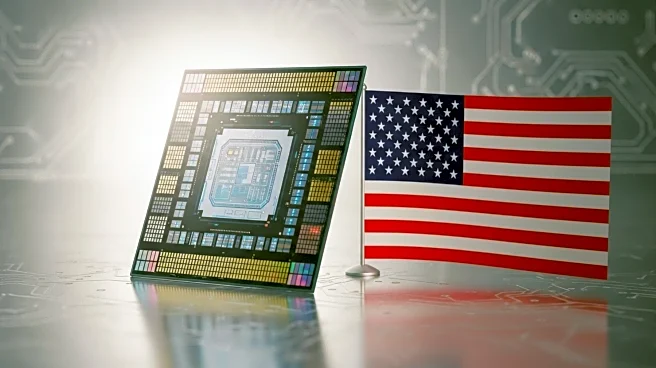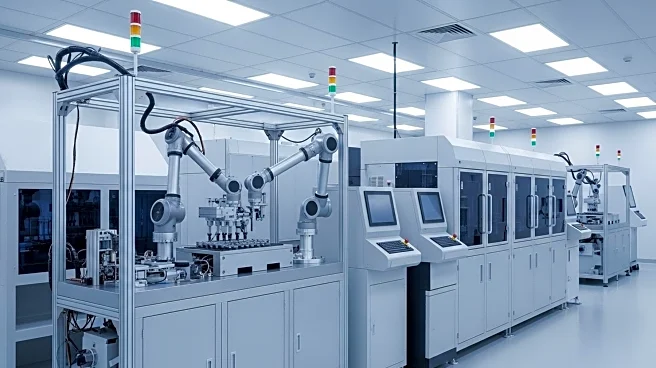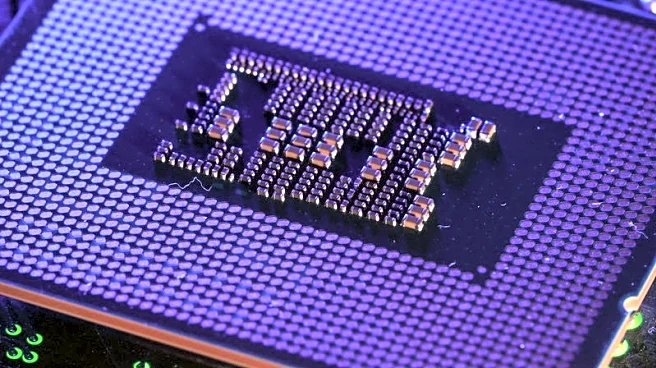What is the story about?
What's Happening?
The Trump administration is contemplating imposing tariffs on foreign electronic devices based on the number of chips they contain. This initiative aims to encourage companies to shift their manufacturing operations to the United States. The plan, which has not been officially reported before, involves the Commerce Department imposing tariffs proportional to the estimated value of the product's chip content. The White House emphasizes the need for America to reduce its reliance on foreign imports for semiconductor products, which are deemed essential for national and economic security. The proposed tariffs could affect a wide range of consumer products, potentially increasing inflation as the U.S. seeks to ramp up domestic manufacturing. The plan could also lead to higher costs for domestically produced items due to new tariffs on key inputs.
Why It's Important?
The proposed tariffs are significant as they represent a strategic move by the Trump administration to bolster U.S. manufacturing capabilities in the semiconductor industry. By imposing tariffs on foreign electronics, the administration aims to incentivize companies to invest in domestic production facilities, thereby reducing dependency on foreign imports. This policy could have broad implications for the U.S. economy, potentially driving up consumer prices and affecting inflation rates. The initiative also highlights the administration's focus on reshoring critical manufacturing sectors to enhance national security and economic stability. However, the plan may face challenges, including potential trade disputes and increased production costs for U.S. manufacturers.
What's Next?
If implemented, the tariff plan could lead to significant changes in the global electronics market, with companies potentially reevaluating their supply chains and manufacturing strategies. The administration's approach may prompt reactions from major stakeholders, including international trade partners and domestic manufacturers. Companies may need to consider relocating production facilities to the U.S. to avoid tariffs, which could result in substantial investment in domestic infrastructure. The plan's impact on inflation and consumer prices will likely be closely monitored by economic analysts and policymakers.
Beyond the Headlines
The proposed tariffs could have deeper implications for the U.S. semiconductor industry, including potential shifts in global trade dynamics and manufacturing practices. The initiative may also raise ethical and legal questions regarding trade policies and their impact on international relations. Long-term, the policy could influence the development of new technologies and innovation within the U.S., as companies adapt to changing regulatory environments and market demands.
AI Generated Content
Do you find this article useful?














